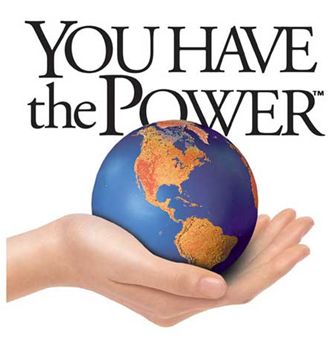Celebrate Energy Awareness Month
 In 2011, President Obama and the Department of Energy established October as National Energy Awareness Month. Given the importance of energy to both our economy and environment, this month is a time to focus on how we’re using energy in our homes and businesses.
In 2011, President Obama and the Department of Energy established October as National Energy Awareness Month. Given the importance of energy to both our economy and environment, this month is a time to focus on how we’re using energy in our homes and businesses.
Many of us grew up in an era of inexpensive energy, where saving pennies by turning off lights seemed pointless. We actually began designing buildings around artificial systems to light and comfort our surroundings, rather than the timeless practices of our ancestors that naturally harvested daylight, heat and ventilation. We also developed more electric appliances to simplify even the simplest of tasks, from can openers to toothbrushes. And we have remote controls for many of these so we don’t have to get up.
Now I’m not condemning any of these items specifically – we are “guilty” of using plenty of these conveniences in our own home. The fact is, the combined effect of all of these electric appliances is a higher energy bill. And as the cost of energy has increased sharply in the last ten years or so, more people are starting to feel the pinch on their pocketbooks.
The average household wastes about half of the energy consumed. This is due to either a lack of efficiency or conservation. For example, use of incandescent lighting is inefficient, but leaving lights on in an unoccupied room is wasteful. There are dozens of things you can do to reduce your energy use, and if you really tried, you could cut your energy use in half. We did – and we are not living an extraordinary lifestyle. Here are some of the things you can consider:
- Replace your incandescent bulbs with compact fluorescent or LED bulbs – particularly in places where the lights are on for extended periods.
- Install a programmable thermostat, and automatically turn heat down while you’re under the covers and away at work.
- Use automatic power-saving settings on computers to turn off the display and hard drives after periods of inactivity, and turn them off or put them in standby mode when not in use.
- Use power strips on home audio/video equipment and other items with remote controls to avoid the phantom loads. These appliances in standby mode use more energy than you think!
- Turn off unnecessary lights, and install timers or occupancy sensors where practical to help automate this.
- Use caulk or weather-stripping around leaky windows and doors, and install heat-shrink film over single pane or drafty windows in the winter. You might also add insulation to your attic.
- Clean or replace filters on your HVAC equipment on a regular basis to optimize their efficiency.
- Install an insulating blanket on your hot water tank, and turn down the thermostat to 120°, and install low-flow fixtures on showers and faucets to reduce hot water usage.
- Replace old appliances, especially refrigerators and HVAC equipment, with new Energy STAR appliances that use much less energy.
You can find a more comprehensive list of recommendations on the Federal Energy Management Program’s Home Energy Checklist. The Energy STAR website also offers a wealth of information.
Many of these things can be done on your own, and you can use tools like the Kill A Watt meter to identify the real energy hogs in your home. You can also take it to the next level by conducting an energy audit; a professional energy auditor can do a much more thorough job of finding leaks and other energy drains, and can help you cost-justify more expensive improvements. The point is – you can begin using less energy simply by paying attention to what you’re using. See what you can do today!
This was published in the Going Green section of the October 2013 issue of Spirit Seeker magazine.
